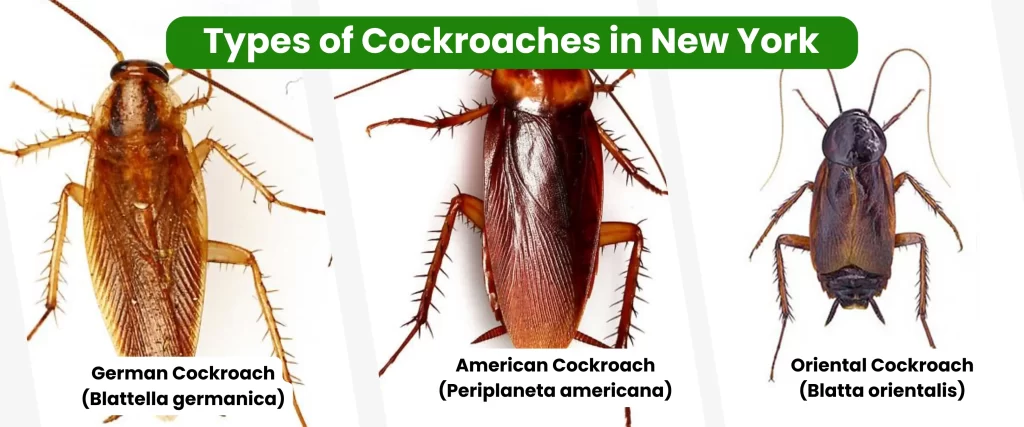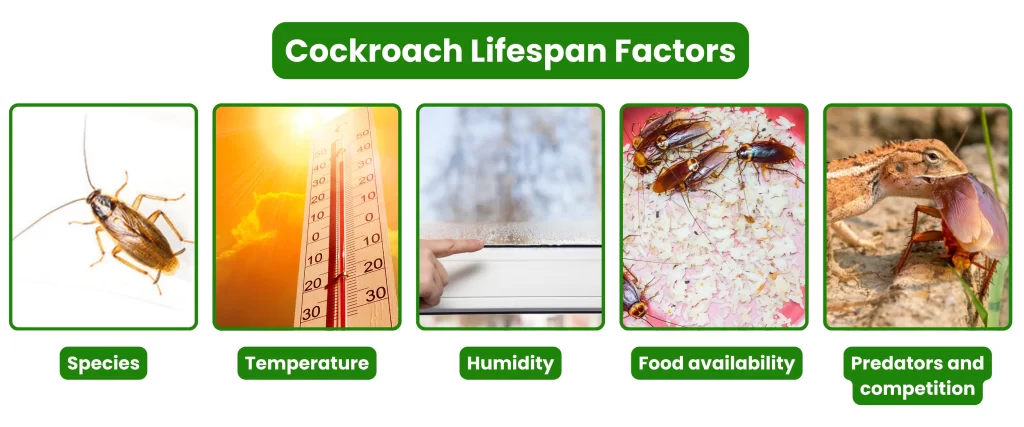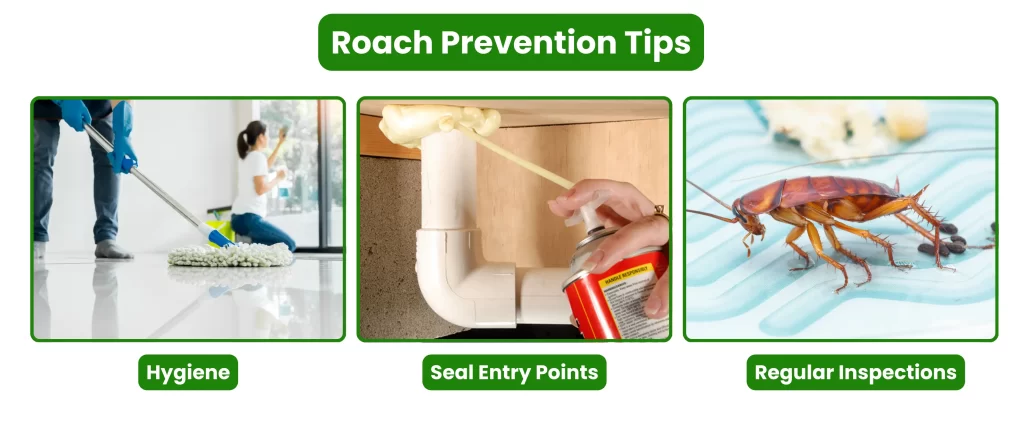
The Unseen Invaders: Understanding and Managing New York Cockroaches
The order Blattodea includes cockroaches. These insects originated about 125 and 140 million years ago, during the Jurassic Period. Only 70 species of cockroaches can be found in the United States, out of thousands that exist worldwide.
New York City, a bustling metropolis, is not just home to millions of residents but also to an equally vast population of cockroaches.These resilient pests are notorious for thriving in urban environments, particularly in the dense, humid settings that NYC provides.
From the subterranean tunnels of the subway to the high-rise apartments, cockroaches have made every corner of the city their domain. Among the most common species found in New York are the American cockroach, the German cockroach, and the Oriental cockroach, each bringing its own set of challenges to both residents and businesses.
Importance of Understanding and Managing Cockroach Infestations in Urban Environments
Understanding the behavior and biology of cockroaches is crucial in managing their infestations, especially in a city like New York where the environment is ripe for their proliferation. Cockroaches are not just a nuisance; they pose significant health risks, as they can contaminate food, trigger allergies, and spread diseases.
In densely populated areas, the rapid spread of an infestation can lead to widespread problems, making effective management and prevention strategies essential. By staying informed and proactive, New Yorkers can protect their homes and communities from these unwanted invaders.
Understanding Cockroaches
Biological Classification of Cockroach
Cockroaches, those resilient and often unwelcome inhabitants of our homes, belong to a group of insects with a long evolutionary history.
Their classification is as follows:

- Kingdom: Animalia (Animals)
- Phylum: Arthropoda (Arthropods)
- Class: Insecta (Insects)
- Order: Blattodea (Cockroaches)
The order Blattodea encompasses a vast diversity of species, many of which are not associated with humans. However, some have adapted remarkably well to our living spaces, becoming notorious pests.
Types of Cockroaches in New York
Let’s delve deeper into the three most common cockroach species in New York City:

German Cockroach (Blattella germanica)
- Appearance: Small, light brown body with two dark stripes running from head to wings.
- Habits: Primarily found in kitchens and bathrooms, often hiding in cracks and crevices. They are highly adaptable and reproduce rapidly.
- Environment: Thrive in warm, humid conditions with access to food and water.
American Cockroach (Periplaneta americana)
- Appearance: Large, reddish-brown body with a yellow band around the thorax.
- Habits: Often found in basements, sewers, and garbage areas. They are strong fliers and can easily invade homes.
- Environment: Prefer warm, moist environments but can tolerate a wider range of conditions than German cockroaches.
Oriental Cockroach (Blatta orientalis)
- Appearance: Dark brown to black, oval-shaped body. Females are wingless, while males have short wings.
- Habits: Typically found in damp, dark areas like basements and crawl spaces. They are slow-moving and prefer outdoor environments.
- Environment: Thrive in moist, humid conditions.
Comparison of Habits and Environments:
| Feature | German Cockroach | American Cockroach | Oriental Cockroach |
| Size | Small | Large | Medium |
| Color | Light brown | Reddish-brown | Dark brown to black |
| Habitat | Kitchens, bathrooms | Basements, sewers | Damp, dark areas |
| Activity | Primarily nocturnal | Active day and night | Primarily nocturnal |
| Reproduction | Rapid | Slower than German | Slower than German |
Cockroach Behavior and Lifecycle
Cockroach Lifespan
Cockroaches are remarkably resilient creatures with lifespans that can vary significantly based on species, environmental conditions, and available resources.
While the average lifespan of a cockroach is around one year, some can live for up to two years.
Factors influencing cockroach longevity include:

- Species: German cockroaches generally have shorter lifespans than American or Oriental cockroaches.
- Temperature: Warmer temperatures accelerate development and shorten lifespan, while cooler temperatures slow down the life cycle.
- Humidity: High humidity is favorable for cockroach survival and reproduction, leading to longer lifespans.
- Food availability: Consistent access to food sources can extend a cockroach’s life.
- Predators and competition: The presence of natural enemies or competing pests can reduce lifespan.
Nymphs Roaches
Cockroaches undergo incomplete metamorphosis, meaning they hatch from eggs as nymphs and gradually develop into adults without a pupal stage. Nymphs resemble smaller versions of adult cockroaches but lack wings and are often lighter in color.

Nymphs molt several times as they grow, shedding their exoskeleton to accommodate their increasing size. This process can take several months, depending on the species and environmental conditions.
Nymphs play a crucial role in infestations as they represent the next generation of cockroaches. A single female cockroach can produce hundreds of offspring over her lifetime, and a large number of nymphs can quickly lead to an overwhelming infestation.
How Far Can a Cockroach Travel in an Hour?
Cockroaches are surprisingly agile and can travel considerable distances in a short amount of time. While exact figures vary depending on species and environmental factors, it is estimated that a cockroach can travel up to several meters per minute. In an hour, a cockroach could potentially cover a significant portion of a building.
Cockroach mobility is a major factor contributing to the spread of infestations. They can easily move between apartments, offices, and other buildings, carrying harmful bacteria and allergens with them. In urban areas like New York City, where buildings are often interconnected, cockroach infestations can spread rapidly through shared walls, pipes, and other openings.
Roach Season and Prevention
When Is Roach Season?
While cockroaches can be a year-round nuisance, their activity levels tend to fluctuate with the seasons. In New York City, cockroach populations typically peak during the warmer months, from late spring to early fall. This is when conditions are most favorable for their survival and reproduction.
Factors contributing to increased roach populations during warmer months include:

- Temperature: Warmer temperatures accelerate cockroach development and reproduction.
- Humidity: Increased humidity creates ideal breeding conditions for cockroaches.
- Food availability: Outdoor food sources, such as garbage and food scraps, become more abundant.
Roach Prevention Tips
Preventing a cockroach infestation is crucial for maintaining a clean and healthy environment. Here are some cockroaches control and prevention tips:

- Hygiene:
- Clean up food and drink spills immediately.
- Wash dishes promptly and store them in a clean, dry place.
- Take out the garbage regularly, ensuring it is tightly sealed.
- Store food in airtight containers.
- Vacuum and mop floors regularly.
- Seal Entry Points:
- Inspect your home for cracks and crevices around pipes, wires, and doors.
- Seal any openings with caulk or silicone sealant.
- Install door sweeps to prevent cockroaches from entering.
- Repair leaky pipes and faucets to eliminate moisture sources.
- Regular Inspections:
- Check for signs of cockroach activity, such as droppings, egg capsules, or molted skins.
- Inspect cupboards, drawers, and appliances for hidden cockroaches.
- Pay attention to areas around sinks, stoves, and garbage disposals.
- Hire the services of professional pest control for regular inspection.
Cockroaches vs Water Bugs in NYC
A common misconception is confusing water bugs with cockroaches, While both are insects and can be found in homes, they are distinct creatures.

- Water bugs are typically larger, oval-shaped, and often have a distinct odor. They are more commonly found near water sources, such as ponds or rivers, and occasionally wander into homes. They are generally harmless.
- Cockroaches are smaller, flat-bodied, and often reddish-brown or black. They thrive in warm, humid environments and are primarily found in kitchens, bathrooms, and other areas with food and water sources. Unlike water bugs, cockroaches are considered pests due to their potential to spread diseases.
Conclusion
Cockroaches are a persistent and unwelcome presence in many New York City homes and businesses. Understanding their biology, behavior, and preferred environments is crucial to effectively combatting these pests. From the resilient German cockroach to the larger American species, each type poses unique challenges.
Preventing infestations is key. Maintaining impeccable hygiene, sealing entry points, and regular inspections are essential steps. However, even the most diligent homeowners may encounter a cockroach problem. In such cases, seeking professional pest control services is advisable.
Remember, a cockroach-free environment is not only about cleanliness but also about proactive measures to deter these pests. By combining prevention strategies with professional assistance when needed, you can significantly reduce the risk of an infestation and enjoy a healthier, more comfortable living space.


